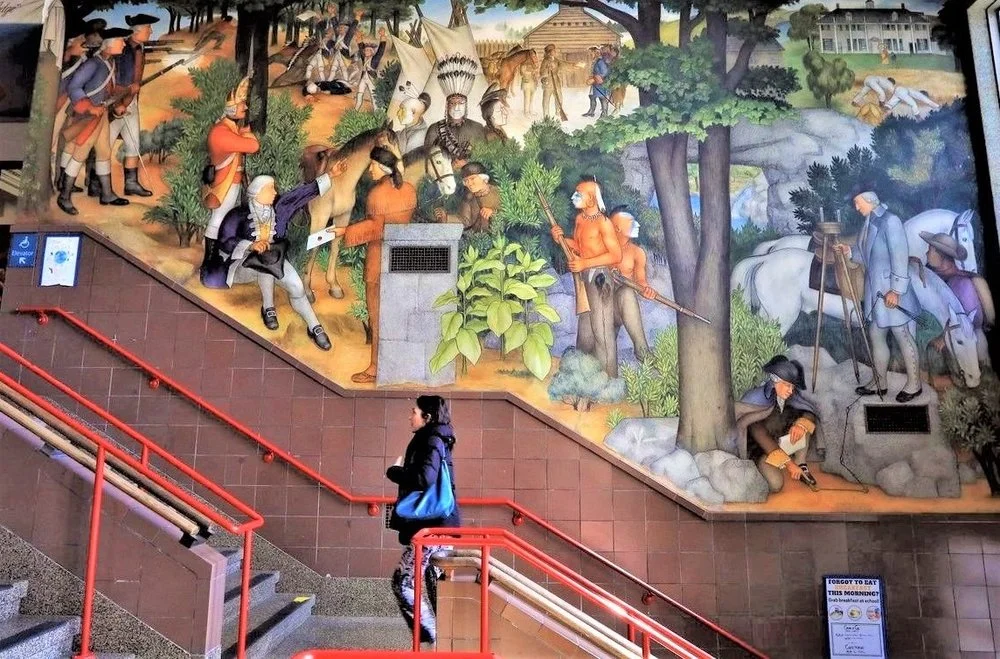Activists Want a San Francisco High School Mural Removed, Saying Its Impact Today Should Overshadow the Artist’s Intentions
/For nearly a century, a massive mural by painter Victor Arnautoff titled “The Life of Washington” has lined the hallways of San Francisco’s George Washington High School.
It may not be there much longer.
The mural “glorifies slavery, genocide, colonization, manifest destiny, white supremacy [and] oppression.” So said Washington High School’s Reflection and Action Group, an ad-hoc committee formed late last year and made up of Native Americans from the community, students, school employees, local artists and historians.
It identified two panels as especially offensive. One shows Washington pointing westward next to the body of a dead Native American. The other depicts slaves working in the fields of Mount Vernon.
Because the work “traumatizes students and community members,” the group concluded that “the impact of this mural is greater than its intent ever was.” They are campaigning for its removal.
The idea that impact matters more than intention has informed debates about everything from microaggressions to cultural appropriation.
But when it comes to art, should impact matter more than intention?
As historians committed to preserving our cultural heritage – and as citizens invested in the power of art to engage the public – we see the growing chorus of voices favoring impact over intention as a dangerous trend, one that makes art more vulnerable to rejection, censorship or even destruction.















